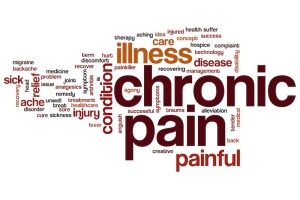- Home
- Editorial
- News
- Practice Guidelines
- Anesthesiology Guidelines
- Cancer Guidelines
- Cardiac Sciences Guidelines
- Critical Care Guidelines
- Dentistry Guidelines
- Dermatology Guidelines
- Diabetes and Endo Guidelines
- Diagnostics Guidelines
- ENT Guidelines
- Featured Practice Guidelines
- Gastroenterology Guidelines
- Geriatrics Guidelines
- Medicine Guidelines
- Nephrology Guidelines
- Neurosciences Guidelines
- Obs and Gynae Guidelines
- Ophthalmology Guidelines
- Orthopaedics Guidelines
- Paediatrics Guidelines
- Psychiatry Guidelines
- Pulmonology Guidelines
- Radiology Guidelines
- Surgery Guidelines
- Urology Guidelines
New non opioid drug for chronic pain in pipeline

Researchers from the Virginia Tech School of Neuroscience are teaming with the University of California San Diego and the U.S. National Institutes of Health to develop a drug -- now in its earliest stages -- that can treat certain types of chronic pain without the addictive consequences of opioids.
The drug compound, known as ML351, was discovered by researchers from the NIH, part of the U.S. Department of Health and Human Services. It is designed to inhibit the naturally produced enzyme 15-Lipoxygenase-1, which synthesizes bioactive lipids that contribute directly to chronic pain not relieved by common over-the-counter nonsteroidal anti-inflammatory drugs such as ibuprofen. This lack of relief can lead patients to resort to more powerful drugs including opioids such as Oxycodone and other narcotics.
"Our goal is to demonstrate the preclinical efficacy of ML351 for chronic pain that does not respond to nonsteroidal anti-inflammatory drugs and might otherwise be treated with opioids," said Ann Gregus, a research scientist with the School of Neuroscience, who is working on the drug compound with Matt Buczynski, an assistant professor of neuroscience who specializes in drug addiction. The School of Neuroscience is part of the College of Science at Virginia Tech.
A paper published on the drug and its likely impact on treating certain types of chronic pain appears in this month's issue of the medical journal PAIN. The paper was written by Gregus and Buczynski, with coauthors Tony Yaksh, a pain expert at the University of California San Diego, and Anton Simeonov, scientific director of NIH's and the National Center for Advancing Translational Sciences. Ganesha Rai, Dave Maloney, and Ajit Jadhav, all of the NIH, co-developed the drug compound.
Acute pain that occurs from touching a hot stove helps protect us from severe self-injury, but chronic activation of these pain signaling pathways can be debilitating, Buczynski said. Presently, only a limited number of drugs exist for effectively treating chronic pain, such as that caused by autoimmune diseases. Current anti-inflammatory drugs such as nonsteroidal anti-inflammatory drugs and steroids help relieve pain by reducing inflammation, but for many types of chronic pain, they are less effective.
ML351 targets a novel signaling pathway believed to be responsible for the development of chronic pain that does not respond to anti-inflammatory drugs. "ML351 may be effective for multiple types of pain, and our future studies will investigate its utility in other models of chronic pain," said Gregus.
Treatment for unmanaged pain is the primary motivation for seeking medical care, Buczynski said. Issues with chronic pain affect more than 40 percent of the U.S. population, resulting in costs exceeding $100 billion per year. The misuse of painkillers has contributed to the ongoing opioid crisis, which was declared a National Public Health Emergency in 2016. The problem has grown so wide that fatal overdoses from opioid use are now the leading cause of unnatural death, and some of the highest per capita opioid abuse in the country occurs in rural western Virginia, where Virginia Tech is based.
"Chronic pain is extremely challenging to treat due to a lack of effective first-line therapies," Buczynski said. "While opioids are highly effective medications, concerns regarding danger of their misuse have reached a fever pitch. Thus, there is critical need for novel nonopioid treatments for the effective management of chronic pain."
The need for a nonopioid, non-addictive pain medication is paramount, added Gregus. "Serious issues with long-term usage or misuse/diversion of opioids necessitate the development of alternative treatments to expand the options available to patients with chronic pain," she said. "ML351 shows promise as a non-opioid therapeutic to treat pain states not relieved by over-the-counter medications. Future studies will determine how we can translate these findings into novel therapeutics for clinical use."
It will be several years before the drug enters clinical trials in humans, much less reaches pharmacy shelves. For now, Gregus and her team will continue to test ML351 in other animal models.
"The next step is to evaluate its effectiveness in reversing established pain states of arthritis or diabetic neuropathy," Gregus added. "If this target has broad applicability for treating pain states, the compound can be optimized chemically and tested for safety and efficacy in larger animal species and then humans."
For more details click on the link: http://dx.

Disclaimer: This site is primarily intended for healthcare professionals. Any content/information on this website does not replace the advice of medical and/or health professionals and should not be construed as medical/diagnostic advice/endorsement or prescription. Use of this site is subject to our terms of use, privacy policy, advertisement policy. © 2020 Minerva Medical Treatment Pvt Ltd